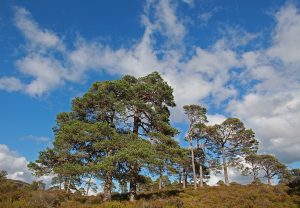
Last Sunday, 14th August, I spent the day in Glen Affric, hoping to enjoy the classic August landscapes of blooming heather amongst the old Scots pines. However, when I got there the heather was not at its best, perhaps because of the cool and wet summer we’ve been having this year. Certainly there was some heather in flower, but it wasn’t as vibrant and abundant in its massed blooming as I’ve seen it at the same time in other years – perhaps its peak of flowering is still to come. The day was intermittently sunny and cloudy, and there were some dramatic but constantly-changing cloud formations over the ancient pinewood, due to the windy conditions.
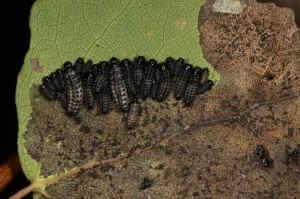
On my way up the glen, I stopped at a couple of places to look at some stands of aspen trees – something that I regularly do, because of my interest in the diversity of species that are associated with aspens. At the first group of aspens I soon spotted a number of larvae feeding communally on the underside of a leaf – I had seen some identical-looking ones at Dundreggan recently, and suspected they were of a leaf beetle (Phratora vitellinae) that I’ve found on the same group of aspens in previous years. In fact, there was an adult that looked like that species not far from the larvae, and I’m currently waiting on confirmation of their identity.
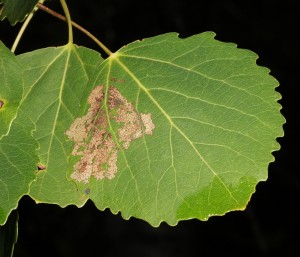
Elsewhere on the same tree, some aspen leaves that were sewn together proved to contain an early instar caterpillar of the poplar lutestring moth (Tethea or), a species that commonly feeds on aspens. Carefully pulling the leaves apart revealed the caterpillar inside, as well as its distinctive method of sewing the leaves together. Unlike some other species of moth caterpillars, where the sewing is done continuously around all the surfaces where the leaves touch each other, the poplar lutestring caterpillar uses a ‘spot welding’ technique, with small blobs of white silk fastening the two leaves together at intervals around the perimeter of where they meet.
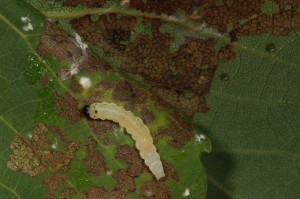
The evidence of this can be seen in the photograph here, in the form of the white spots at several points on the leaf surface, around the caterpillar itself.
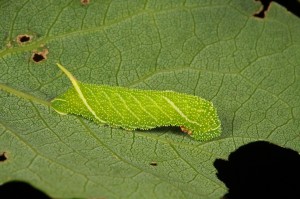
Moving up the glen to another group of aspens, overlooking Loch Beinn a’Mheadhoin, I came across a caterpillar of the poplar hawk moth (Laothoe populi). This was a relatively early instar, as it wasn’t very large, but it already displayed the superb camouflage which this species exhibits, whereby it almost perfectly matches the appearance of a rolled up leaf, complete with a tail spike that resembles the petiole or stem of a leaf.
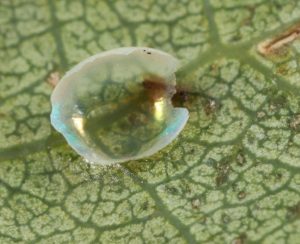
On a nearby leaf I found the remains of an egg which I suspect is the one that the caterpillar hatched out of – it looked like the right size, and was also similar to one of the poplar hawk moth that’s on the UK Leps website. However, the only way to be absolutely certain of this identification would be to be there when the caterpillar emerged – a rather unlikely occurrence!
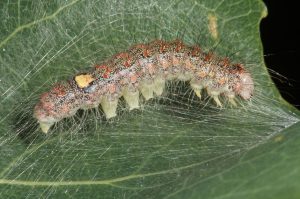
Looking around some more, I found a different caterpillar on an aspen leaf – another easily-identified species, in this case of the poplar grey moth (Acronicta megacephala).
None of these species are particularly rare, but they illustrate some of the large range of biological diversity that is associated with aspen, making it one of the most interesting trees in the Caledonian Forest.
Thank you so much for your excellent picture of a hawk moth caterpillar – snap! You have solved a mystery for me.
Hi Suzie,
Thanks for the feedback – I’m glad my photo was helpful.
With best wishes,
Alan